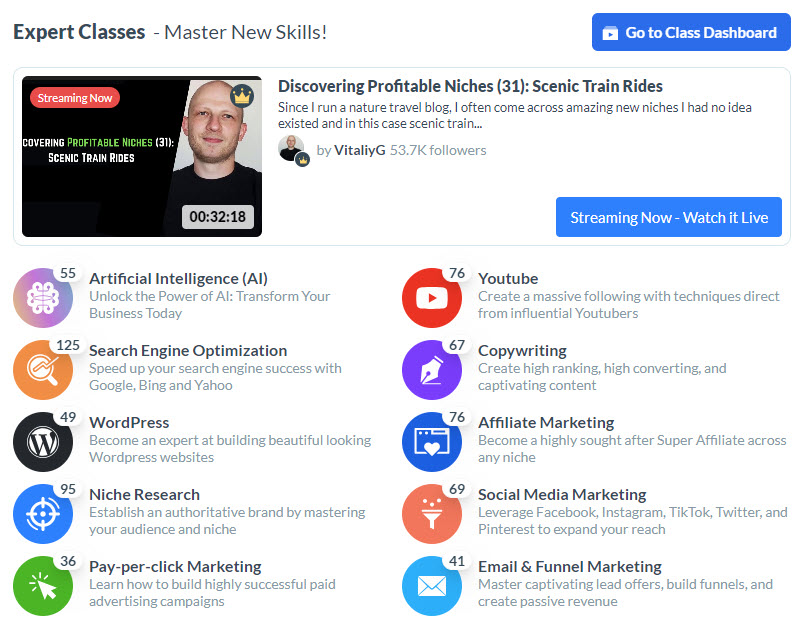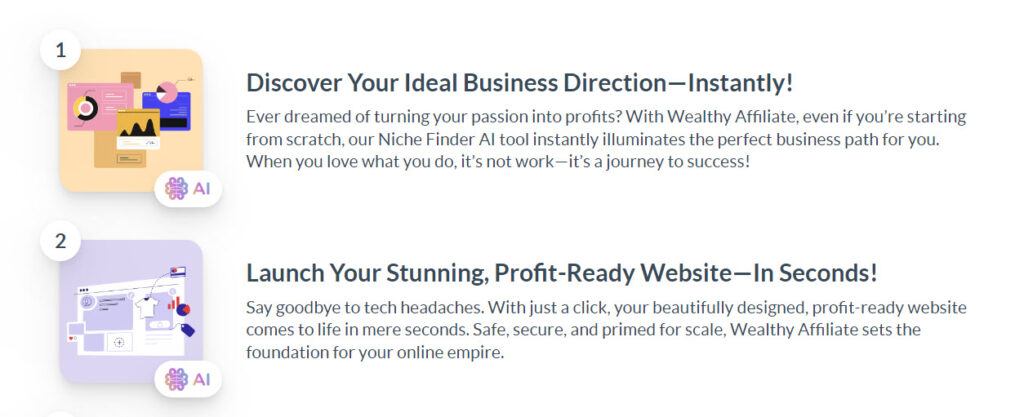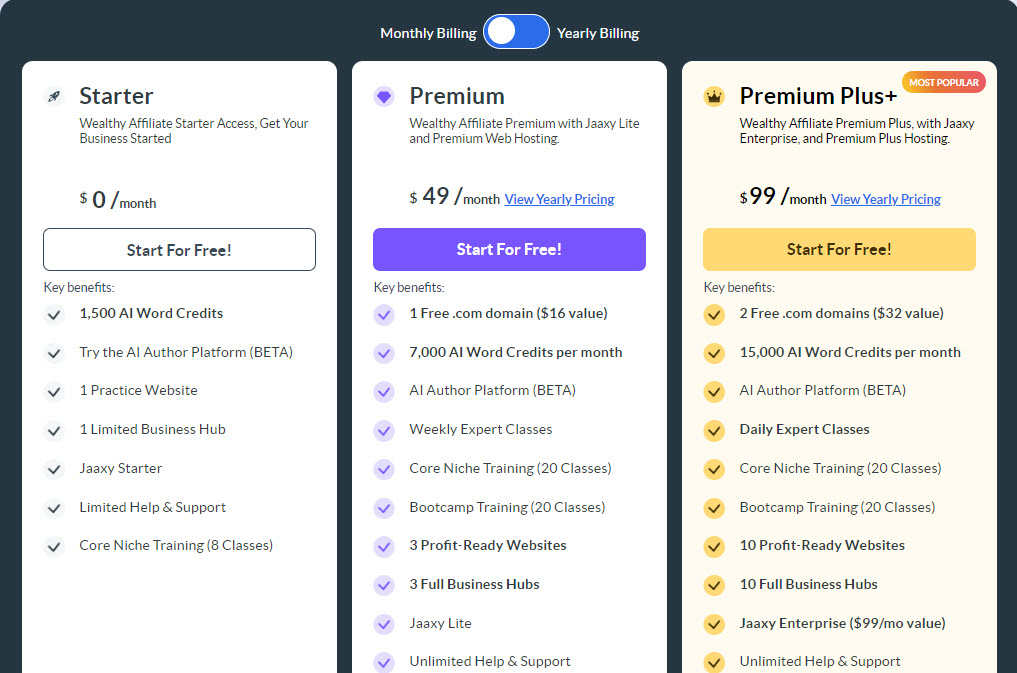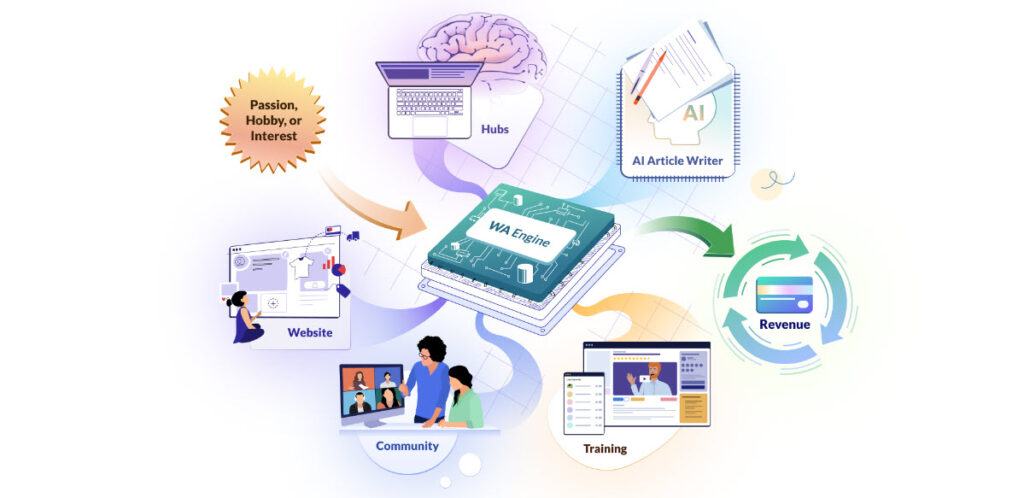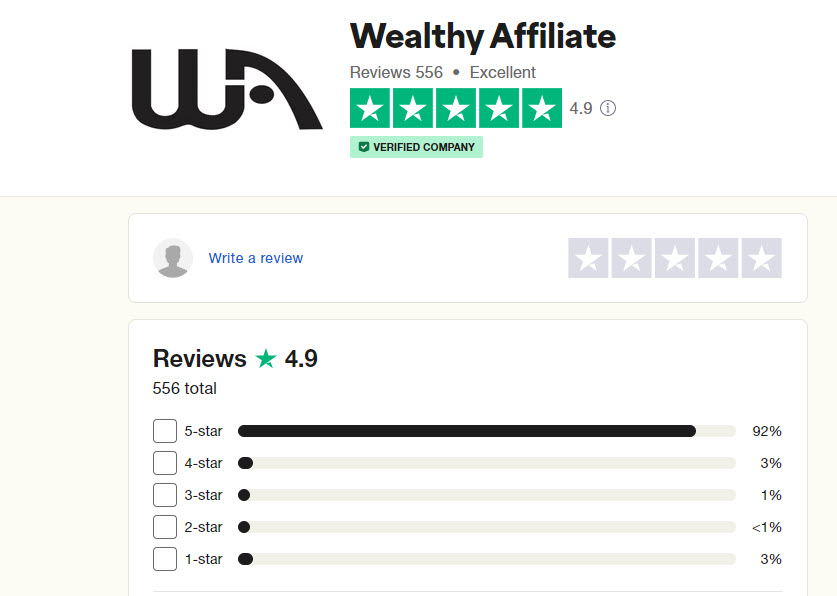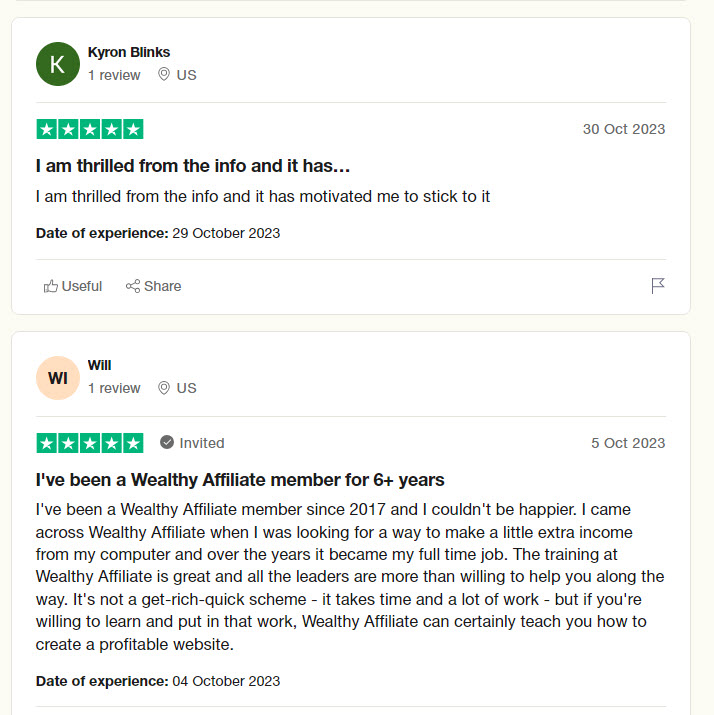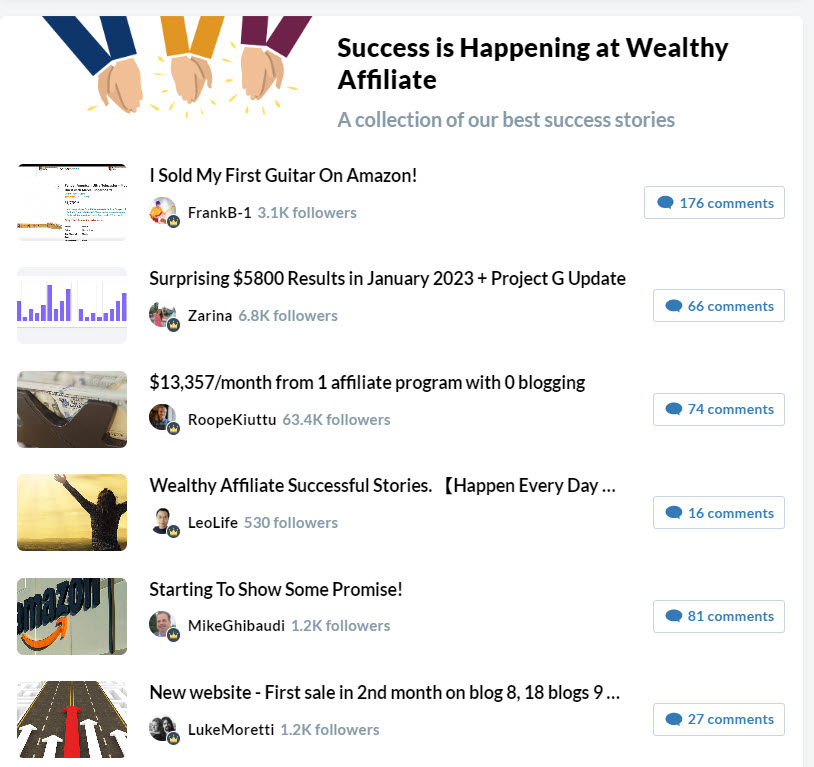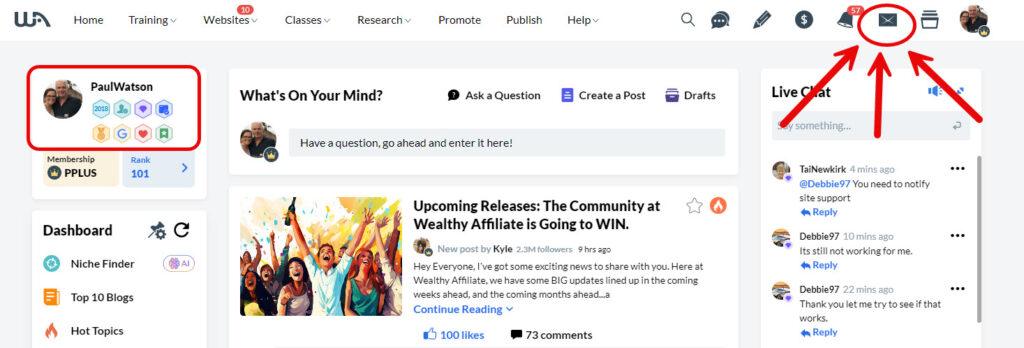Hey there Sea Changers. Today we are going to look at 3 ways to start affiliate marketing without a website this year. You see I have found myself on an email list recently where I am being bombarded with requests to purchase software programs, educational products and platforms that will make me 1000s of dollars a day with just 30 minutes of work without a website. And as I looked into them, most were not worth the money I paid however the process being taken to get those affiliate links in front of my face without a website seem to actually work!
So, rather than send you down the rabbit hole of paying for all of these programs until you find something that just may work, I wanted to run your through 3 ways that you can set up an affiliate marketing business without the need of a website, and in most cases, for little to no outlay. Let's start with what we are looking at here.
What is Affiliate Marketing?
In simple terms, Affiliate marketing is the process where you promote a product via a website or the other means (the purpose for this post) and provide links to the sales pages of the vendor for purchase. Once they click on the link and make their purchase it is the vendor who then manages the sale and shipping etc. They also obviously hold all inventory and set the sales price. You, as the affiliate marketer are then paid a commission on the sale that is made.
To my way of thinking, there are two types of affiliate marketers out there:
- The website type – This is where you build a website to promote products in a single niche by writing posts with links included in them. These posts are generally written to review products and solve problems and assist readers to make their purchases accordingly – e.g. 3 best clippers for poodles etc. These types of affiliate marketers tend to stick to the one niche (or a couple of sub-niches) in their sites.
- The non-website type – Marketers here usually promote products on a case by case basis and can change from niche to niche as new options arise or interests/fads change. Single niche marketing is not usually done here however there can be exceptions of course.
We will cover both options in our 3 methods below. However, before we get to that, there are some things to consider as you plan your non-website affiliate business:
Products/niche

The advantage that an affiliate marketer with a website has is that they are able to build a following via the constant addition of quality, problem solving information on their site. This means that as people look for varying information within that niche (such as stuff for dogs, fishing equipment, arts and crafts stock and so on) then a website has the opportunity to cover all of them in one spot.
Without a website however, you are a little more limited so your choice of product and/or subject needs to be something that is popular now so that you have the best possible chance of attracting sales. This can include:
- Training courses – personal development is a huge niche
- Software – for assisting with setting up an online business or a home office for example
- Fad products – sites like Amazon provide reports on current top selling items
- Affiliate marketing software platforms – such as from marketplaces such as JVzoo and Clickbank etc.
There are plenty of products out there to promote, you will just have to find them and then apply to their affiliate programs. Many will ask for a website as part of the application so as you apply, you will need to make sure you are clear on how you plan to promote their products (see Landing pages below also).
This does not mean you can't focus on a particular niche, you will just have to work out how to maintain your information levels without a website.
Keywords
At the end of the day, affiliate links are totally useless if no one is able to find them. As with a website, you will need to make sure that whatever approach you take to promote your links is backed by a solid set of keywords. In short, keywords are the words and phrases that make it possible for people to find your products when undertaking internet searches. The key here is two fold:
- Try and match the words that real life people would use to find information that they need.
- Try and match these searches to words that have high search numbers and low competition.
Let's say as an example that you are promoting a Tony Robbins course. The trick is to then work out what people are searching for online to find these courses. You will need a keyword tool here (I use Jaaxy) where you can search for keywords related to Tony Robbins:

Now, look for phrases that have high search numbers (Avg) and low competition (QSR – the lower the better). From here, you will start to be able to build the wording that you are placing in your content. “Tony Robbins – Unleash Power within” looks ok here. Of course, if you are in a high competition area such as this one, you may need to play around a little.
Let's look at say, “dog grooming clippers”:

From that, I would be making sure that I have “professional dog grooming clippers” somewhere in my content with 318 average searches per month and low competition. Oh, and I would probably try and find an affiliate program from Wahl branded clippers as well.
So, regardless of your niche and the sales option you choose below, keywords will be critical to attracting people to your content and then to your affiliate links.
Affiliate marketing without a website
Ok, so once you have your product sorted and your keywords in mind, now let's check out my 3 ways you can affiliate market without a website.
1. Social Media
We all know how big social media is and its reach when it comes to the online world. It is also a very common option when it comes to affiliate marketing without a website and has the advantage of being able to accommodate both types of affiliate marketers as discussed above. Generally, making affiliate sales via social media usually comes about via one of two ways:
- You have a social media site that you have been working in for a while and have built a following. Affiliate links can then be added as a means of monetizing your account.
- You have a product that you want to sell and then build a social media site to advertise your affiliate links.
Now, obviously the first option is a little easier if you already have a following and can easily get those eyes on your links. However if not, then here are some ways that you can attract people to your posts:
- Keywords – Social media posts and pages will appear in search engine results if you match the right keywords – especially if you are working with the likes of YouTube and Pinterest.
- Comment on the posts of others – Let's go back to our Tony Robbins example. If I had a Facebook page and was using it to promote his courses, I would find all other posts to do with Tony Robbins and comment on them – not your links, but real comments. This puts your page in front of all of that page's followers as well who in turn may come back to you and follow you too.
- Be active – Don't just post your promotion and forget about it. Social media algorithms love sites that are active. Add videos of yourself talking about the product or if someone comments on your posts, respond and strike up a conversation (their friends will see this as well remember).
- Join groups – Groups are a great way to interact with others and see what questions they are asking, what information they need and what they are talking about. Again, it provides extra access to your page via exposure when you comment as well as the opportunity to interact. Note that most will not let you promote your links in these groups but you can lead them back to your posts if it fits nicely within the conversation.
So, what you use? Consider the following:
YouTube
YouTube is the second largest search engine in the world behind Google (so make sure your keywords are on point) and in my opinion, almost a ‘must have' if you don't run a website. It can be used to discuss just about anything and more people in the U.S. watch YouTube at night than all of the network TV channels combined.

We discussed the advantages of FaceBook groups above. The online communities within FaceBook are a priceless tool for interaction and the ability to discuss the products you are selling. The key is building a following however if you follow some of the steps we talked about above, you can definitely sell products via this platform – many do.
If you are working in a visual niche or with the ‘latest' products, the Instagram will work wonders. Influencers make great money in this platform so if you are good at setting up shots of your products that are going to attract viewers, then go for it here. Instagram works extremely well if you are active on the platform via commenting in the posts of others too.
This is another platform that is visual and generally the domain of the female market. Again, if your products are visually attractive and you can present them well in a graphic design format, then Pinterest pins can work wonders. And again if you can master your keywords here, Pinterest pins can quickly gain extremely high search engine rankings as well.
TikTok
This is a newer platform but one that affiliate marketers are starting to utilise with good results. Obviously as it is with YouTube, its main aspect is videos so anything you can do that is quick and hip that shows off your product in an interesting manner, then TikTok is your go to here.
That's right! Wealthy Affiliate provided me with all of the tools and training I needed to get this post in front of my audience - a.k.a YOU!
You too can start your very own online business here that can make you money from anywhere in the world!!
2. Email
I mentioned above that I receive a lot of emails from affiliate marketers trying to convince me to buy ‘junky' software that will help me make a lot of money with no work and no experience. I have to admit here that even though most of the products that they are promoting are useless, their method of getting their links in front of me are not.

Despite all of the social media platforms we have looked at in our first option above, email marketing is still the most powerful tool at an affiliate marketer's disposal. This is because once you have them on your email list, you are able to make contact without them having to find you via an online search to offer options such as:
- Further problem solving value – We all know that affiliate marketing is all about solving problems and providing value. Having an email list of people who have enjoyed your social media posts or made a purchase and have chosen to connect further with you allows you the opportunity to provide extra value and problem solving goodness.
- Upsells and Cross sells – Providing value aside, the real advantages of emails are that you can send targeted sales messages to your list to offer further purchase opportunities based on their previous purchases. This could be in the form of extra components, complimentary products, high ticket items or refills etc.
- Specials and bonus offers – This is another area where the real power of an email list comes in. By offering specials and bonus offers to your list they are more likely to respond favourably as they know that they are getting something that others are not. If you are in a hobby type niche, you can also take the opportunity to offer discounted products/services to your list without them having to go hunting for them.
- Specific targeting – One of the main problems with social media promotions is that you will often waste time or money targeting those that you were not intending to. Most autoresponders these days allow you to segment your lists so that you can send information, sales pitches or basically anything else to a specific category of readers based on their demographics or interests.
- Warm lists – Many marketers will tell you that as soon as someone has opted in to your email list that they should be considered a ‘warm' or ‘hot' lead. This is because if they have taken the time to join your list then they are more than likely interested in what it is that you have to offer. Many marketers will set up their email campaigns to offer new entrants bonus discounts or offers as soon as they join whilst their interest is still high.
Building your list
Many of us are a bit jaded when it comes to email opt ins these days so you will need to some sort of enticement to grow your list. The only real problem you have here is getting your enticement offer in front of people to start with which is why you will probably need to look at using this in conjunction with social media – websites are best for this but we are talking no website here remember!!.
The easiest way to build a list is to set up your social media links so that they ask for an email as part of the purchase process (which is how I ended up on the ones I get). If not, there are other ways to incentivise sign up including the offer of:
- Discount offers – this is a great one for those looking to sell products that allow for coupon codes etc.
- Something free – such as an e-book, book, trinket or merchandise etc.
- Something helpful – instructional ‘how to’ guide, newsletter or checklist etc.
- Personal assistance – special assistance from yourself that general visitors to your platform do not receive.
At the end of the day, you will need something of value for your readers so on your social media posts, videos or in your discussion groups you will need to outline what they will get in return for signing up to your email list. Of course, this could simply be a promise to update them when the Tony Robbins tickets are on sale or have special offers etc.
From here, you can then market your products and links to them directly without ever having to write another social media post.
Note: Some autoresponders do not allow affiliate marketers to use their products whilst other allow it as long as you refer your readers to your social media platform (or website if you had one)rather than directly to the affiliate links. Always check the account terms and conditions before you hand over any payment details.

3. PPC Advertising
Our third option is also very effective however unlike the two above, you are going to be up for some out-of-pocket costs from the start. PPC Advertising is another way that you can get your affiliate links in front of people based on their search behaviour or social media history (which tends to be one and the same these days).
Platforms such as Google, Bing and FaceBook will allow you to build ads that contain all of your keyword rich information, product outlines, features and benefits without the need to post anywhere else. The most effective way to do this is via pay-per-click (PPC) advertising.
You, as an affiliate marketer place ads onto your chosen platform service with product outlines and links to your affiliate sales pages. Your ads are then shown based on the search keywords entered by a reader as below:

As you can see, they appear at the top of the page above organically ranked results meaning you have a better chance of attracting someone to your affiliate links, social media posts or even email opt in.
What is PPC?
In essence, pay per click is pretty much as it sounds. In most cases, you only pay for the advertisement when a reader clicks on the ad. You are able to set the price that you are willing to pay for each click (anywhere from 0.01 to over $100) which will usually determine how many times your ads will show based on a pre-set number or how fluid they are with keywords close to the ones you stipulate.
Some platforms also allow for cost-per-impression meaning you pay a small amount whenever your ad shows in their search results list, Pinterest pages or FaceBook feed etc. (called an impression) regardless of whether it is clicked on or not. This can be effective if you are trying to build brand awareness or simply reduce the PPC rates as well.
Landing page requirements
It should be noted here that search engine and FaceBook advertising will ask for a landing page URL to link to for your ad. This does not mean you will need a website – nearly ruined the whole post hey! – rather a page that will display your links and any further information. Landing pages are extremely effective as they can also be used to add your email opt in details as well as links to other products that are not included within your initial ad.
There are a number of free landing page creation tools around that will do this for you and many will provide you with a sub domain URL that you can use for your ads. You can even do it in Microsoft Word or PowerPoint too but will need your own URL. And if you are planning to add your email opt in to the page then check your autoresponder software as most of them include landing pages within their platforms too.

Conclusion
So… There are my 3 ways to start affiliate marketing without a website this year. They will all take a little work but each can be very effective in generating affiliate marketing income without the need to set up a complete website.
I hope it has been helpful for you as you commence or continue your own online business and as usual, please do not hesitate to comment below if you have any questions, need some advice or have any experiences to share. Oh, and especially comment if you have any other methods you have used to make website-less affiliate incomes as well.
Until next time
Have fun
Paul
Note: If you make a purchase from this page, there is a very good chance that I make a commission from it – these commissions do not increase your sale price. This may include sales made via Wealthy Affiliate and Aweber.
Do you want further assistance with any of the above or have decided to build your own money making website after all?
Are you looking for a comprehensive training platform that can give you step by step training, 24/7 support, tools to develop and host your very own website, ongoing assistance with SEO and social media and access to some of the best affiliate marketing minds on the planet, then click on the following link to read more about Wealthy Affiliate.






